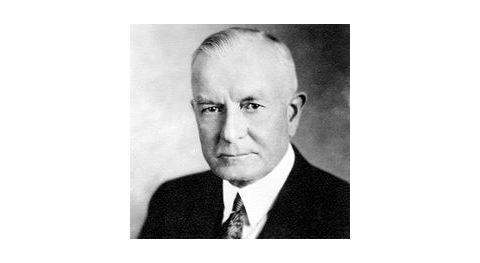Great minds discuss ideas; Average minds discuss events; Small minds discuss people.Eleanor Roosevelt
The meaning of this quote is that great minds want to explore and discover new ideas, while average minds focus on the things that already happened. Small minds want to talk about other people. Being able to effectively articulate, present and debate ideas enables you to develop as a person and a leader (or potential leader).
By the end of this topic, you will understand how to:
- Ensure the content you present to the audience is substantiated
- Facilitate idea generation through conversations that challenge existing ideas, explore new approaches and create an open discussion
- Prepare for and answer questions from your presentation or communication in a clear, concise and relevant way
- Seek, reflect and use feedback to improve your presentations and communication.

Substantiated Communication
Substantiated communication is showing or being able to show that the information you are providing is truthful; that is, it can be authenticated, proven, confirmed, corroborated, validated or verified. Substantiated communication may include evidence-based research, links to data and objective facts.
Your core purpose for the presentation or communication and the outcome you are looking to achieve should also be substantiated in that your audience can easily see the flow from the information to the outcome. You want your audience to be saying, ‘That makes sense’. Get at least two people to go over your presentation and its content to review the level of substantiation. Ideally, ask two people with different views or styles to yourself.
Read
To learn more about the distinction between debate and group discussion, read the following article by S. Surbhi on the Key Differences website: Difference Between Debate and Group Discussion (with Comparison Chart) - Key Differences
Presenting Your Idea

When presenting your idea, refer back to the key elements of delivery, tone and content to guide your decisions about how you would like to communicate.
Delivery
How you deliver the message makes a bigger difference than the actual words you use. When communicating in person or on video, body language has a big impact on engagement, understanding and trust.
Here are some things to consider:
- Make eye contact so that people feel you are talking to them personally
- Stand tall and relaxed, move slowly and purposefully
- Use your body and arms to emphasise key points
- Freeze and pause when you want the audience to think deeper or differently
Tone
There are several aspects of tone that will have a major impact on how your presentation is received by the audience. Make sure you:
- Vary your tone as much as possible to fit the content and key points
- Change your pace of speaking—sometimes faster to convey passion and excitement; sometimes slower to convey importance or reflection
- Change volume—louder on key points and actions; softer for emotional and thoughtful parts of the content.
- Talk in a relaxed and comfortable way, like you would when discussing an interesting topic with a good friend
- Be succinct in delivering your presentation and answering questions
- Show enthusiasm, passion and belief in your
Content
When completing a final check of your content, it is a good idea to make sure that, in your presentation or communication, you:
- Introduce yourself, even if you think everyone knows who you are
- State the purpose of the presentation or communication
- Use something interesting or curious as a teaser to build interest and anticipation early on E.g. ‘Later I am going to tell you a story about Sally who overcome a similar challenge in a way you would not expect!’
- Be specific with details and examples
- Use stories and anecdotes that paint a picture so anyone in the audience can understand
- Keep language simple and easy for everyone to understand
Watch
Watch the following TED Talk by Niro Sivanathan for an interesting tip on being persuasive: ‘The Counterintuitive way to be More Persuasive’
How can we facilitate discussions that generate new ideas and why are new ideas important?
Creative thinking and idea generation stand at the core of sustained success and innovation. All organisations need to embrace the mindset of continuous improvement to come up with new ideas and solutions for the market they serve.
History is full of successful organisations that did not keep up with change and fell or failed. Just some of these include Kodak, Nokia and Borders books. Plenty of business leaders have shown an incredible lack of foresight in their plans for the future.

Example
I think there is a world market for maybe five computersThomas Watson, chairman of IBM, 1943 (Jadek & Pensa, 2017)
Some other examples of predictions or ideas uttered by famous figures that have not aged well due to their lack of forward-thinking include the following: ‘Who the hell wants to hear actors talk?’ – Harry Warner, founder of Warner Bros. studios (Quote Investigator, n.d.)
Facilitating Conversations or Discussions
Facilitating a discussion is different from debating an idea. Facilitating is about cooperation, sharing many views, ideas and perspectives in an exploratory and curious way.
Debating is more about stating a view or idea, influencing and persuading others to consider and agree with or adopt the idea. It has a more competitive context, although unless you are in a debating competition or a court, it does not have to be competitive.
As a facilitator, your role is to encourage as much participation from as many people as possible. Your aim is to get them to explore as many possibilities and perspectives as possible. You can ask questions to challenge existing views or processes, as well as ask people to present ideas from opposing points of view.
Here are some facilitation tips:
- Provide structure to the discussion
- Agree on respectful guidelines for the session and ensure people stick to the agreed behaviours
- Be visible and active—Steer the communication flow and keep it on track
- Focus on including all participants in the discussion, ensuring all voices are heard
- Enable a comfortable and inclusive environment of openness and trust
- Guide the discussion with questions
- Record the discussion in a visible way such as a whiteboard or flipchart (not minutes)
- Summarise the results and actions.
The following three techniques can help put people in a creative mode and help them generate new ideas.
- More about quantity than quality
- Quantity leads to more innovative and creative suggestions
- Can generate brave, unorthodox ideas.
- Sometimes focusing on the opposite scenario helps change your perspective and find a solution for a problem
- If you are considering an action, focus on what will happen if you do not take it. What will the outcome be?
- This can work well if you have spent a lot of time thinking about a problem and you feel stuck.
- Find an apparently different problem to solve—Something not related to your initial problem and look for solutions for it
- While you are doing this, you will notice unexpected similarities between both problems
- Review these similarities; they may help you come up with ideas or solutions for the initial problem.
Read
Read 8 Awesome Creative Thinking Techniques by Harry Gardiner on Koozai to learn some useful tips for creative thinking.
Sources and Methods of Research for Idea Generation
- Online or offline
- Databases
- Government pages
- Australian Bureau of Statistics
- Market research
- Journals or articles
- Key subject matter experts of industry professionals.

How you answer questions is often even more important to get people to support your idea than the presentation. This is where you engage with the audience about their thoughts and concerns. This is also where you need to display your genuine interest in the audience and your depth of understanding of the topic and your idea.
Listening is the most overlooked skill when answering questions. We know we need to listen, yet we do not practice listening and often do not do it well. Borders books. Plenty of business leaders have shown an incredible lack of foresight in their plans for the future.
Tips for answering questions:
- Listen to the whole question
- You don’t have to answer immediately. Pause and listen to all parts of the question. Do not interrupt. A long question can change direction. It is important to hear the content of the question and try to decipher the questioner’s intention.
- Understand the context
- If you have not understood the question or its context, ask the person to clarify. Check for confirmation by paraphrasing the question back to them.
- Involve the whole audience
- Make sure the whole audience has heard and understood the question; repeat it or paraphrase it if needed. This keeps the rest of the audience interested while you are thinking and answering.
- Respond concisely
- Direct your answer to the questioner and the rest of the audience. Keep your response as focused as possible, leaving time for other questions. Ask the questioner if you have answered their question in enough detail.
- Allow follow-up questions via email
- Encourage the audience to ask questions after the event and give your email address. This shows high-level respect for everyone and implies that the topic has further scope for enquiry. If you receive questions, answer them.
Your options for how you answer questions depend on how well you understand and can answer them. However, there are several approaches to take:
Short, clear, message if you know the information.
Ask for clarification. If a question is not related to the issue, or is inaccurate, personal or based on false assumptions, you can point this out; but do this carefully.
Pass questions to the audience or another person; or admit you do not know the answer but will follow up.
Say you will talk to the person after the event, or that this is being discussed later in your presentation.
Explain this is outside the objectives for today’s event and suggest talking about it later. Avoid going off-topic.
Read
The following article by Dom Barnard on the Virtual Speech website explains some ways to approach dealing with questions after a presentation: ‘Guide for Handling Questions after a Presentation’
Guide for Handling Questions after a Presentation (virtualspeech.com)
Here are some more tips about answering questions:
- Think of questions as a good thing—people are interested and engaged
- Make eye contact with the questioner
- Always keep your cool
- Answer in sections if the question is long, or your answer has several parts
- Recognise ulterior motives behind questions:
- The "devil’s advocate" wants to oppose you and challenge the strength of your presentation'"
- The "sniper" wants to criticise you and create hostility and distrust
- The "energy thief" looks for a negative aspect of everything you say
- The "know-it-all wants" to demonstrate they know more than you
- The "honest" wants to tell you respectfully that they do not agree with you
- The "wanderer" wants to tell you they haven’t listened to anything you have said.
- Show empathy—People may want to understand how your ideas may impact them. Think about the downside for them, what else they care about and what happens next for them.

Feedback from others is vital for improvement. Self-reflection is only from your perspective and experience. In difficult conversations, the impact you have on others is a critical factor that determines if the conversation will be effective.
Feedback is the only way you can truly understand what the other person(s) experienced and felt during the conversation. To get feedback, ask the other person(s) to give you feedback.
Asking for feedback is uncomfortable for most people. Asking someone for feedback after a difficult conversation is often even more uncomfortable. However, it is the only way you can really improve your ability to have effective difficult conversations.
Note
Feedback is a gift— someone is investing their time and effort in YOU. Please receive it as the gift it is, no matter the content.
Tips when asking for feedback:
- Be specific about what you want feedback on
- Ask for examples
- Accept that most people will not be able to give you feedback immediately
- Follow up to get more feedback.5
Examples of how you can ask for feedback:
- ‘Could I please ask you for feedback about the presentation?’
- ‘How did I do at giving you the opportunity to share your view?’
- ‘Could you please give me an example from the presentation when you thought I stayed quiet and gave you opportunity to speak?’
You can also ask this set of questions:
- What did I do well?
- What could I do better?
- What could I do differently next time?
If the answers to these questions are broad, then ask for specific examples.
For example, if someone said you did well or you were confident, you can ask, ‘What specifically did I do well?’ or ‘What specifically did I do that showed confidence?’
Note
If you ask broadly, ‘Please feel free to give me feedback’, most people will not. People struggle to remember specific situations and specific behaviours. So, focus on a specific area or behaviour.
Tips for receiving feedback:
- Stay open to what is being said
- Listen and do not interrupt
- Say, ‘Thank you’
- Reflect on the feedback and decide how you will change your behaviour
You can also have a discussion with a coach or mentor about how you conducted the difficult conversation. A good coach or mentor will help you see things in a different way that perhaps you were not aware of and help you to have insights on how you can improve.
Feedback is your audience’s response; it enables you to evaluate the effectiveness of your message. If your audience does not understand what you mean, you can tell by the response and then refine the message accordingly:
- Discuss feedback with an appropriate person in your workplace, or with a colleague you trust. Identify items that are relevant and will enhance the message you are delivering.
- If needed, gain approval for changes to the content and keep a record of changes made.
- Think about feedback and making updates as proof that your initial content was clear and effective, triggering further thought and ideas from people who were interested enough to give you input.
Additional Resources
Refer to the following resources from relevant community organisations, expert bodies and industry leaders to learn more about how to articulate, present and debate ideas:
- Debaters Association of Victoria - Home (dav.com.au)
- Home Page - District 73 Toastmasters - Vic, Tas & SA
- TED Talks
- Rostrum Australia - Public Speaking Victoria
- MotivationHub - YouTube
Quiz

